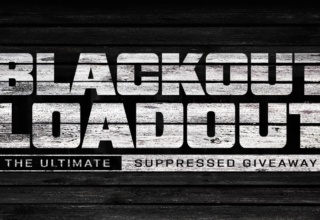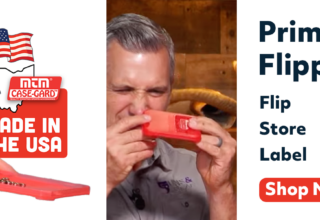The modern sporting rifle (MSR) movement of the last decade or so has significantly expanded firearm ownership across the U.S. That’s no small feat, considering gun ownership rates in America. The popularity and proliferation of AR-15 rifles and, most recently, AK variants, has put firearms into the hands of a “different” generation of enthusiasts—individuals that often have not had the mentoring benefit of someone teaching them the importance of diligent firearm maintenance.
Of course, new products and technology can also be credited with the somewhat carefree attitude of many MSR owners toward gun maintenance. One-and-done cleaning and lubrication formulas along with ever-simplified maintenance tools have provided an easy out from the conventional protocols.
Consider, for example, the AR rifle barrel. With most AR tubes sporting chrome-lining, nitride treatment, or being constructed of stainless steel, many new (and even veteran) shooters think these materials and finishes mean their bores are relatively impervious to harmful fowling, corrosion, copper build-up, and other nasties that can slowly rob a barrel of accuracy. Therefore, think they do not need to be given serious attention as far as cleaning goes.
Well, that’s just wrong-thinking right there.

To maintain integrity, accuracy, and ensure safe operating pressure, rifle barrels should stay as clean and gunk-free as you can make them. That means thoroughly cleaning them after each shooting session to prevent long-term fouling build-up and to keep the barrels rust- and corrosion-free.
The problem comes when inexperienced shooters look to the easy cleaning technology and think, “That’s all I need.” Squirt some CLP onto a bore snake, run the snake through the bore a couple of times and call it done. That chrome-lined or nitride bore will do the rest, or so the assumption goes. If you have not read my philosophies on cleaning, lubricating and protecting – click here to read the article.
The truth is, that is just the start of the barrel cleaning operation, not the final solution. For proper maintenance of your AR-15 or AKM barrel, here’s what you need to do…
STEP ONE: FIELD CLEANING
There certainly is a place for bore snakes and oil in your black rifle cleaning regimen, and it is at the range. Once you’ve separated all the lead from their cartridge cases for the day, pull out your caliber-specific bore snake, give it a squirt of gun oil or CLP, and pull it through the bore a few times (chamber to muzzle). Be sure to do this while the barrel is still warm to ensure you remove as much of the loose fouling as you can. The longer the fouling sits and the colder the barrel becomes, the more difficult it is to wipe out the gunk.
Just remember…running a bore snake through a barrel does not constitute “cleaning” the barrel in any way. This only dislodges the easy-to-remove fouling and particulates from the barrel immediately after shooting.

THOSE NEEDFUL THINGS
Once you’re back home, the real barrel cleaning can begin. You’re going to want several items and supplies to do this job properly.
For starters, the work will go a lot easier and with minimal mess if you can devote a clean and clutter-free area for firearm maintenance. Any work bench will do, but one with a vice that allows you to mount your upper receiver (AR-15) or a complete rifle (AKM) is ideal. Lacking a vice, a cleaning station such as the MTM Case-Gard Gun Vice is equally suitable. This is a super-handy accessory because it is portable and provides a solid platform to not only clean your gun (and slope the barrel at an angle for solvent drainage) but also to perform most any work, such as installing a scope or other accessories.

For tools, you will want:
- Piercing-tip jag (caliber-specific)
- Cleaning rod (coated rod with ball-bearing handle)
- Bore brush (caliber-specific)
- Bore guide (application-specific, not universal)
For supplies, you will need:
- Solvent (such as Hoppe’s #9 that cleans all fouling)
- Gun oil or mineral oil
- Cotton cleaning patches (caliber-specific)
- Denatured alcohol
STEP TWO: KILLING THE CRUD
As mentioned, running a bore snake through your barrel immediately after a shooting session will remove most loose fouling and, with a light oil deposit, halt corrosion from forming long enough to get home and do a proper cleaning. What it will not do, and the reason a proper cleaning is a must, is remove copper fouling deposited along the bore’s lands and grooves. Copper fouling is the long-term accuracy killer because, left in the bore, it can cause inconsistent bore diameter and promote corrosion—detrimental conditions to both accuracy and barrel health.

Removal of copper fouling must be done by both chemical and mechanical means. Start by placing your rifle or upper receiver assembly into your vice with the muzzle angled down. This will allow excess solvent to run out of the barrel and into a small cup or other receptacle, letting you can keep your work area clean.
For the solvent, Hoppe’s #9 is a proven solution. Thoroughly saturate a cotton patch with the solvent and run it down the bore with a jag or patch loop. Do this two or three times to really soak the bore. You can even point the muzzle down and drip a generous amount of solvent directly into the barrel prior to installing it in your vice. If you do use a jag to run the saturated patch, be sure to use a bore guide to prevent damaging the bore and making a mess in the chamber area. Allow the solvent to set for 10-15 minutes, or for however long the solvent manufacturer recommends.
After the allotted setting time has passed, install the caliber-specific brass cleaning jag onto your cleaning rod and run two or three dry patches down the bore to wipe out the loose fouling and contaminated solvent.
STEP THREE: SCRUB, SCRUB, SCRUB
While a quality solvent will do a good job of dissolving and loosening fouling from the bore surface, saturation alone will not complete the task. The bore must also be scrubbed with a wire bush for maximum effectiveness. For this, you will use a wire bore brush.

With the upper assembly or rifle still mounted in a vice with the muzzle angled downward, install a caliber-specific wire bore brush onto the cleaning rod. Saturate the brush with bore solvent and make around a dozen passes through the bore (again, while using the bore guide). Push the brush completely through the barrel, past the muzzle crown, and then pull it back out the chamber end. Be sure you do not try to reverse direction while the brush is in the barrel or it will get stuck!
A note about cleaning rods: It’s worth it to invest in a high-quality, caliber-specific cleaning rod rather than a flimsy, universal “kit-style” aluminum rod assembly. A good cleaning rod will be coated to prevent damaging the bore, will have a smooth-rotating handle to allow brushes and patched jags to rotate with the barrel’s rifling, and should be only long enough to pass the brush and jags through the bore guide and out the muzzle end.

STEP FOUR: WIPE AND WIPE AGAIN
With the initial scrubbing complete, remove the brush and install the jag. Pierce the center of a caliber-specific quality cotton cleaning patch and push it through the barrel. It will come out yucky, as will the next few patches. Continue running patches through the bore until they come out mostly clean.
STEP FIVE: REPEAT
Although that last patch may have exited the bore with only a hint of brown on the lily-white cotton, rest assured that the bore is not yet as clean as you want it to be. With the first round of cleaning behind you, it’s time to do it all over again, and you may have to repeat the process another time or two before the bore is truly clean.
Here’s a tip: Before you redeploy the bore brush, clean it thoroughly with denatured alcohol to remove the grungy solvent and dissolved fouling. You don’t want to reintroduce that to your barrel. The best way to do this is to set aside a small container and fill it with denatured alcohol, and then swish the brush around to remove the residue. Let the brush air-dry or dry it off with compressed air before applying fresh solvent and running it down the bore.

STEP SIX: PROTECTION
Now that your bore is clean, you want to give it a light coating of oil to prevent rust forming before your next shooting session. Do this by applying true gun oil (not a CLP) or food-grade mineral oil to a clean patch and run it down the bore.
There’s no question that proper rifle bore cleaning is task few of us like to do, but to ensure that we enjoy accurate-shooting barrels for many years to come, it is the price we must pay for admission. The investment in the tools, supplies, and time (which really isn’t that much) will pay big dividends in the long run.















